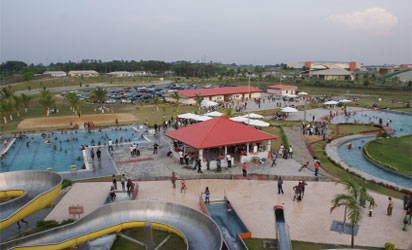The Ethiopia’s Tourism Satellite Account (TSA), a tool for boosting tourism to effectively contribute to the nation’s economy, was launched today by the Ethiopian Ministry of Tourism and the United Nations Economic Commission for Africa (ECA).
“We have the data thanks to the TSA launch, but it is up to us to interpret and use it effectively to understand the true magnitude of the tourism industry,” Geoffrey Manyara stated during the launch in Addis Ababa, Ethiopia, speaking on behalf of Mama Keita, the director of the ECA Eastern Africa Office.
“Let’s make sure that this tool aids in our ability to make well-informed decisions that support growth in the tourism industry that is both inclusive and sustainable.”
A standardised approach for calculating the GDP, employment, and investment contributions of tourism is the TSA. It provides us with a reliable and consistent technique for incorporating tourist data into the national accounts, in line with international standards established by the UN World tourist Organisation.
“With this tool, we can now quantify the broader economic ripple effects across sectors like agriculture, construction, and retail—as well as the direct benefits of tourism, such as visitor spending on lodging and transportation,” Manyara added. He added that the TSA is an effective tool for decision-makers in the public and private sectors. It makes evidence-based policy possible by giving us the comprehensive data we require to maximise tourism’s contribution to employment creation, national development objectives, and investor attraction.
Additionally, he claimed that the capability to measure both the financial and non-financial aspects of tourism improves the ability to plan for the growth of sustainable tourism that benefits the environment and the economy. Ethiopian tourism had a remarkable rise prior to the COVID-19 pandemic.
At the top of a decade of steady expansion, the sector brought in around USD 4.8 billion to the GDP, and over 1.4 million foreign visitors arrived. Strategic investments on roads and airports, in particular, as well as a stepped-up international marketing campaign that positioned Ethiopia as a top travel destination for adventure, culture, and history, were the main drivers of this success.
But this progress was severely hampered by the pandemic. 2020 saw a decrease in foreign visitor arrivals of nearly 84% from the previous year, amounting to around 228,200 tourists. “The future appears bright, but it will need consistent work and thoughtful planning,” he remarked.
According to projections for the next five to ten years, Ethiopia’s tourism industry may approach pre-pandemic levels by the late 2020s if investment continues. Growth will be primarily fuelled by initiatives aimed at establishing new tourism offerings like ecotourism and strengthening infrastructure and security.











